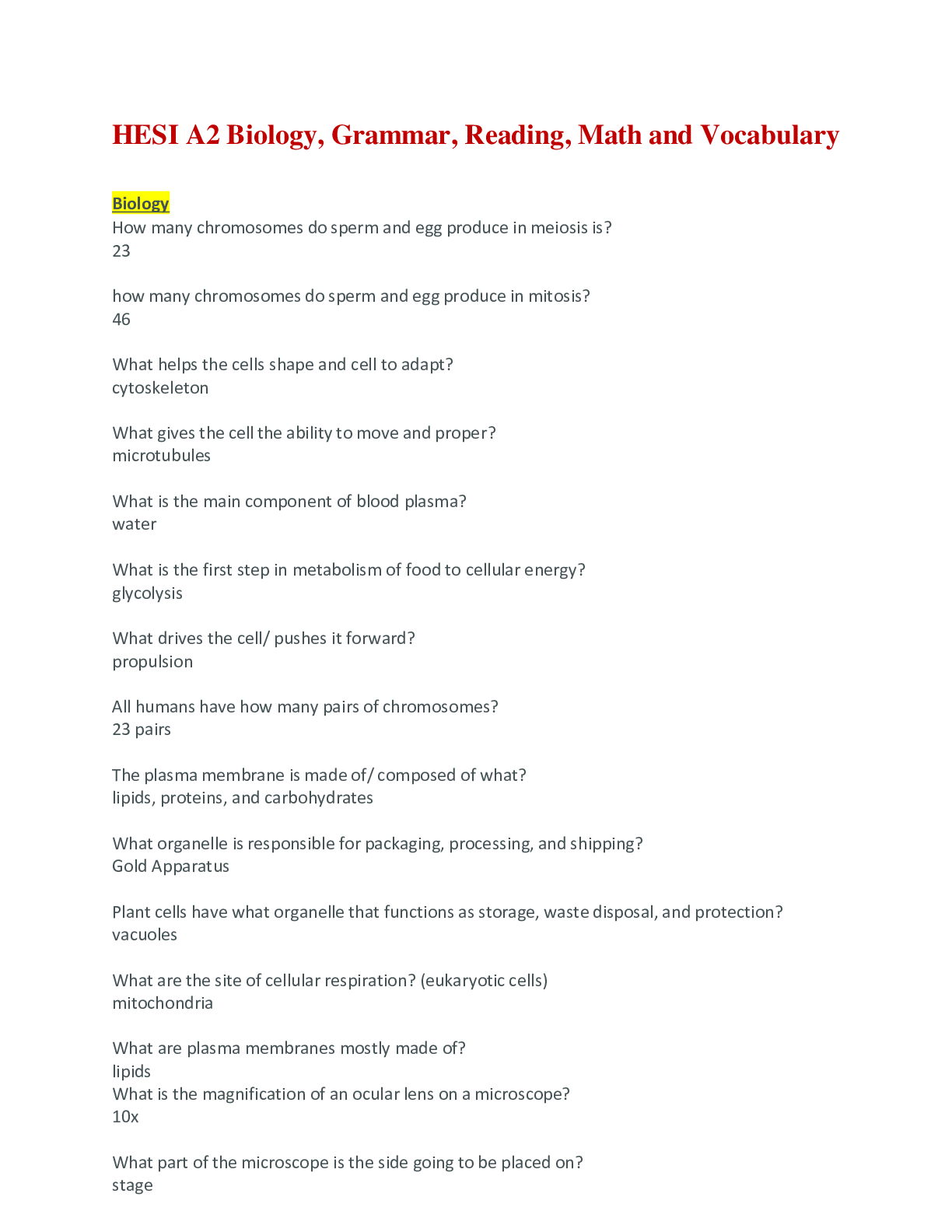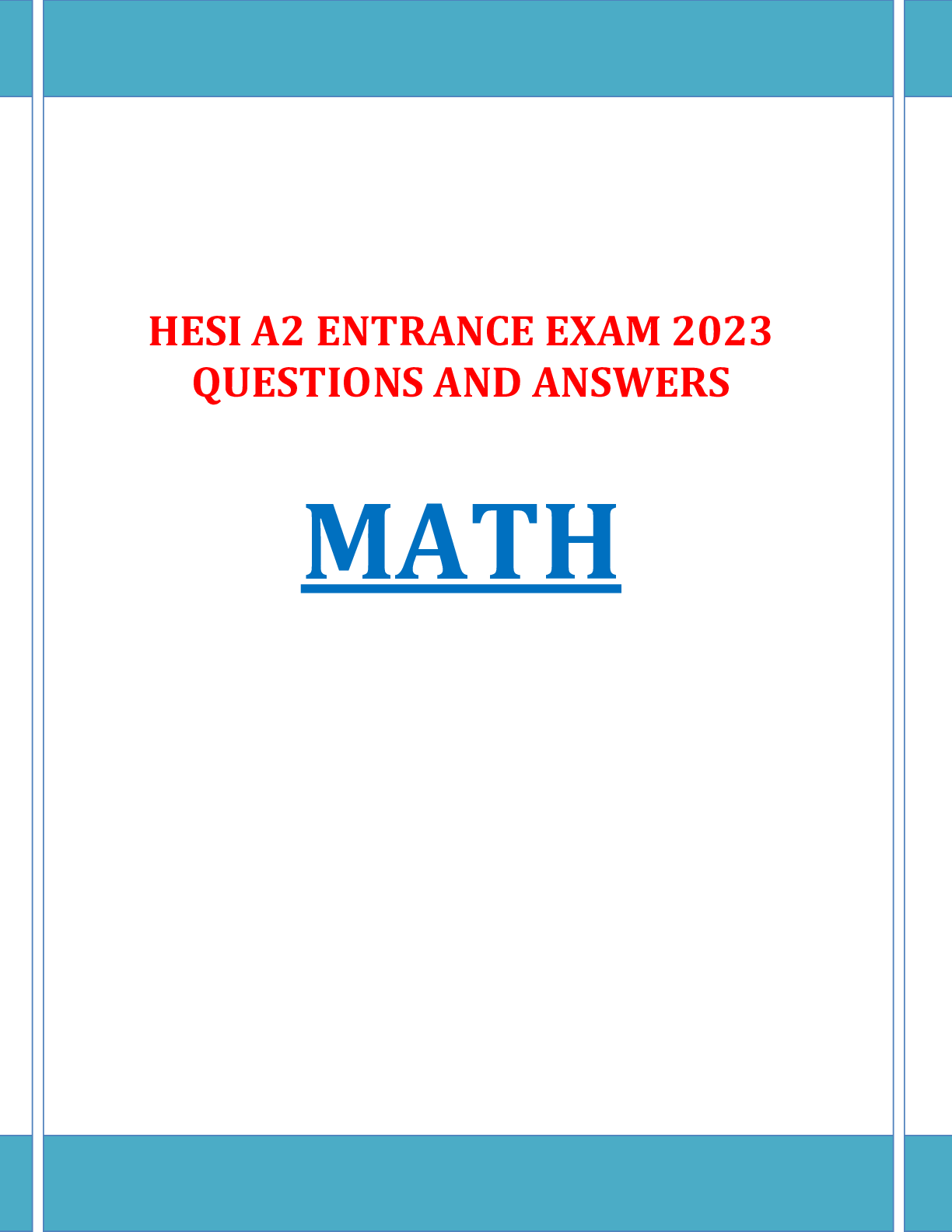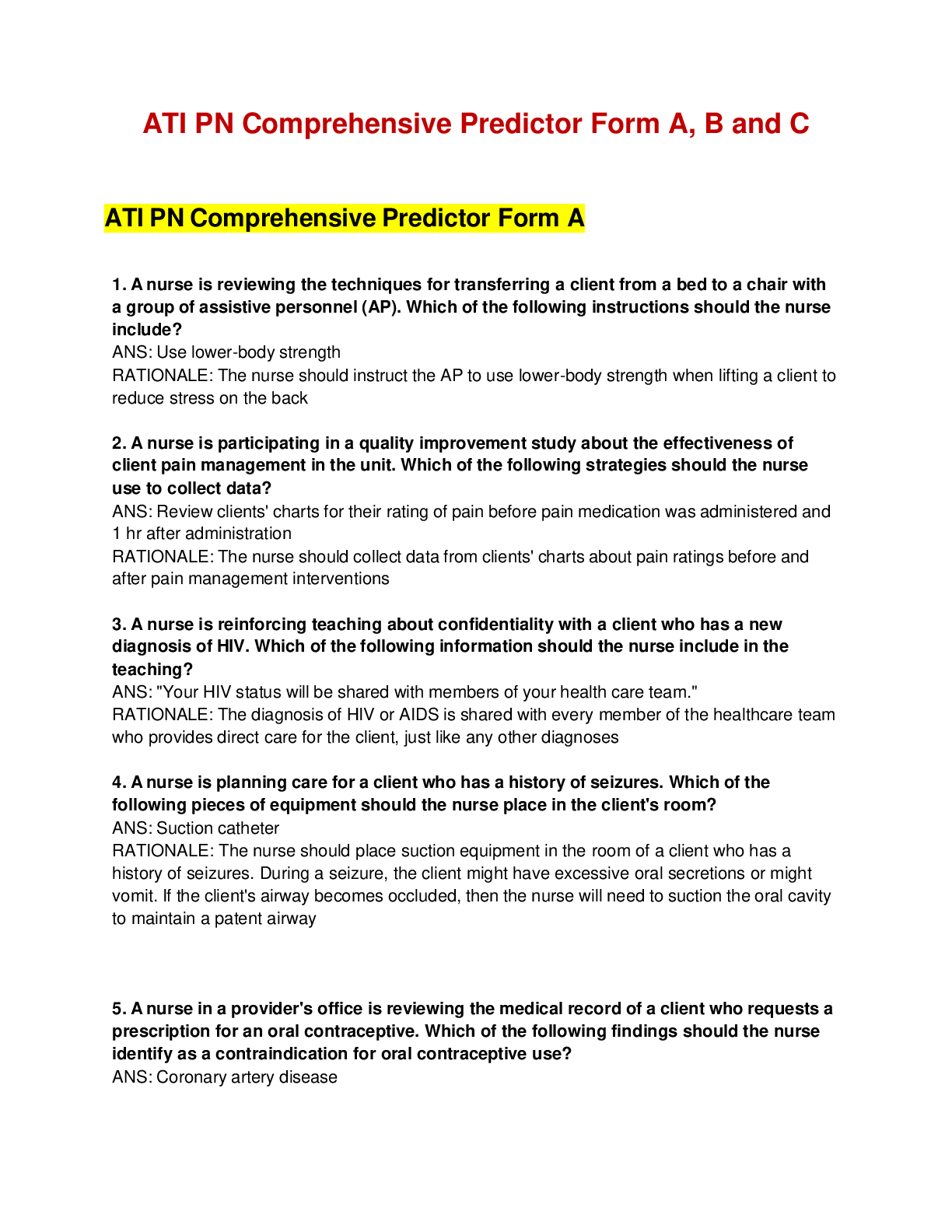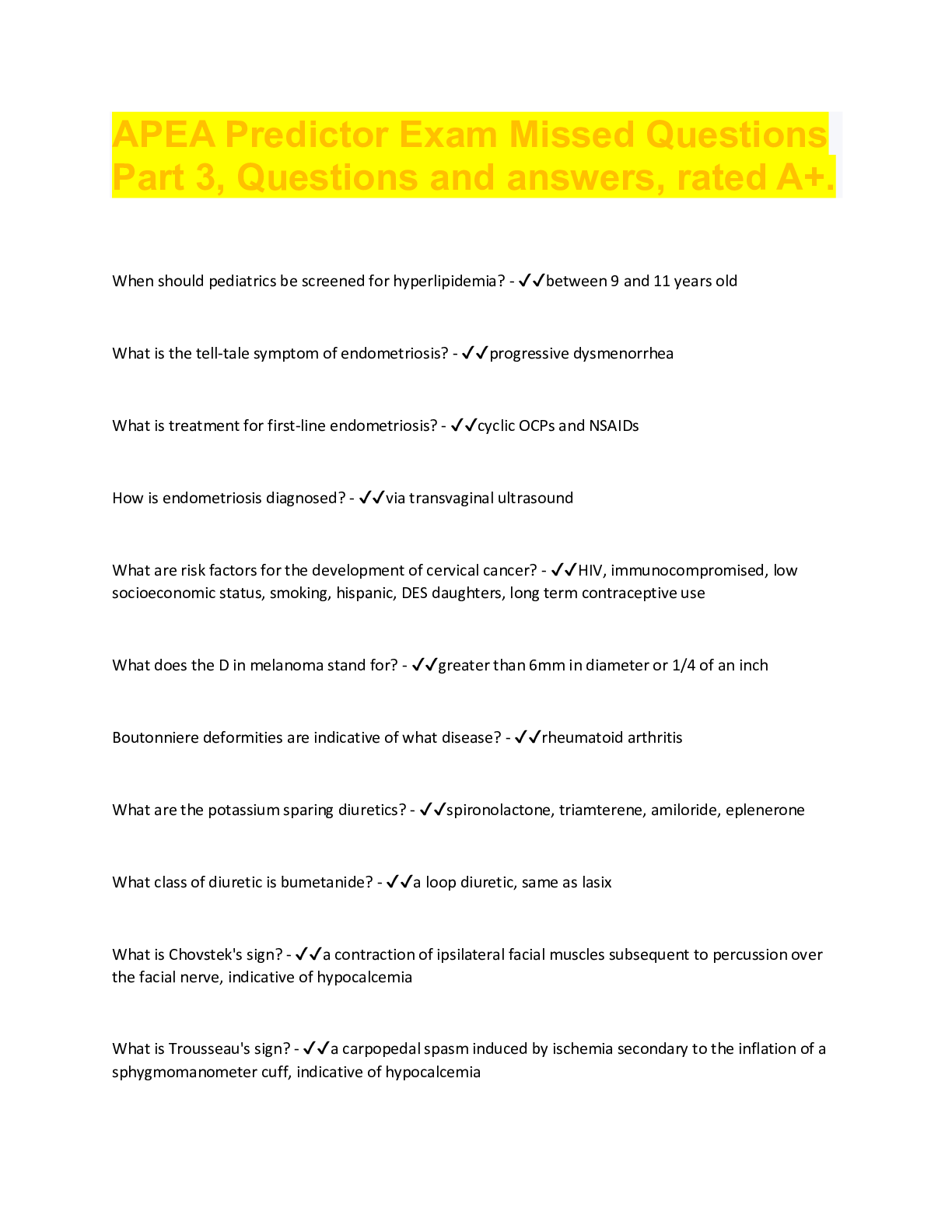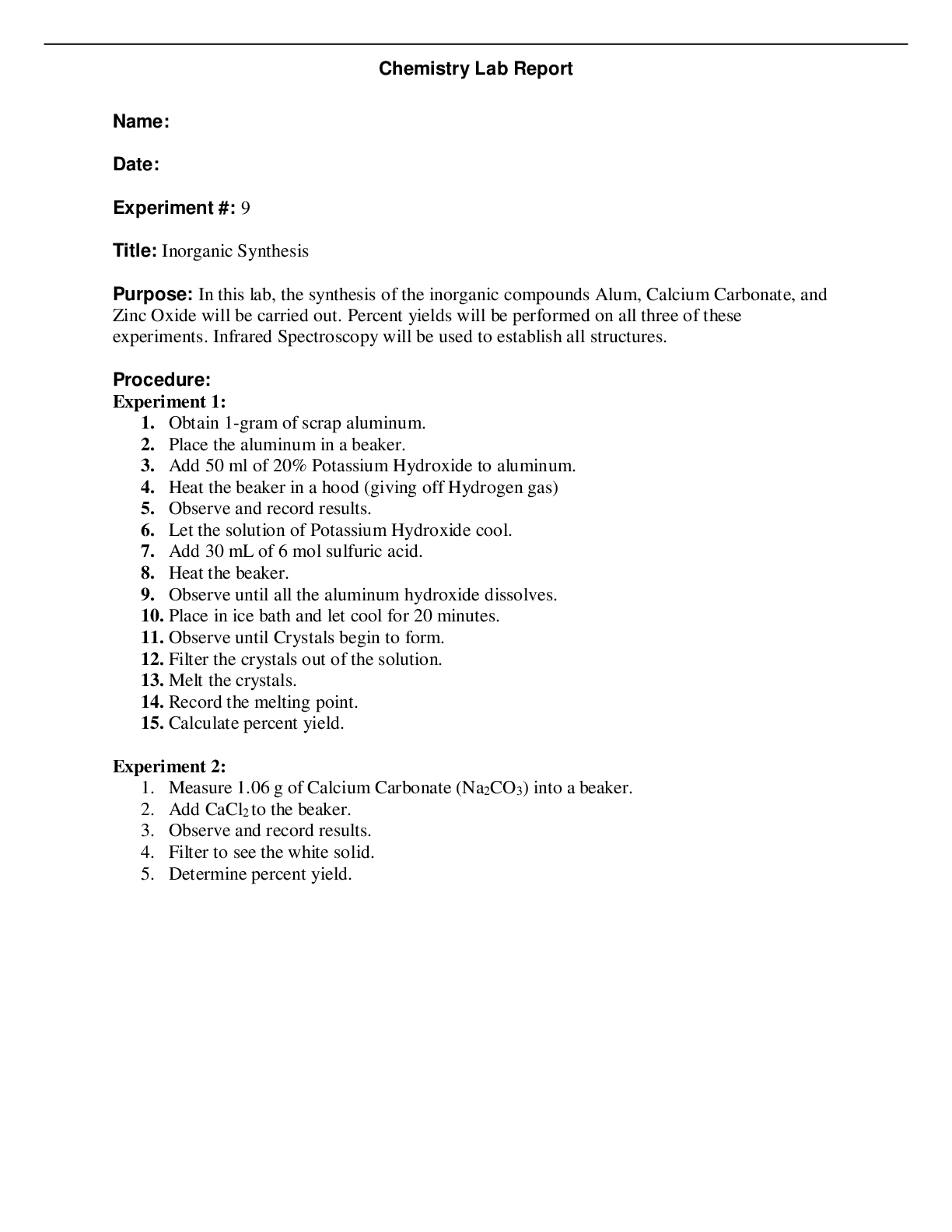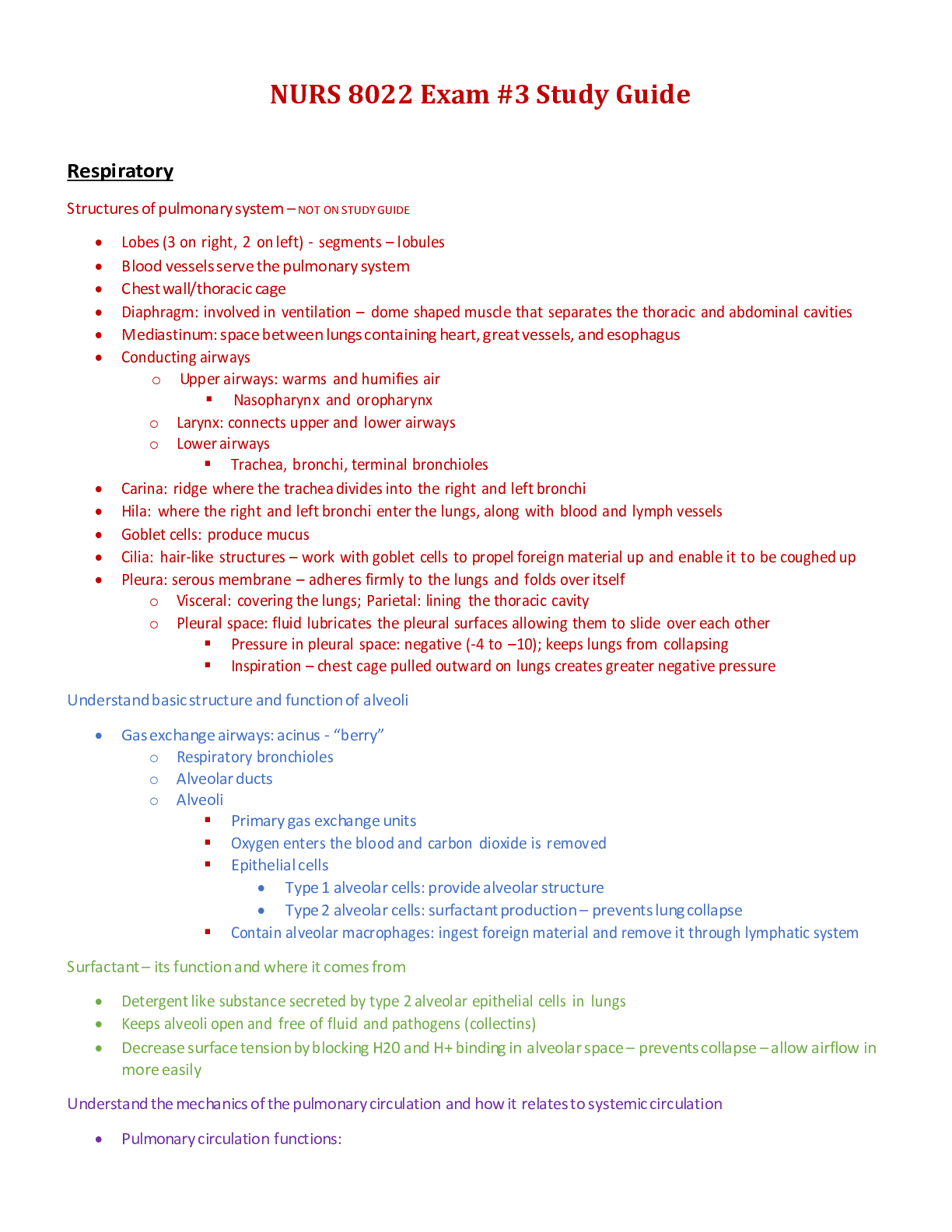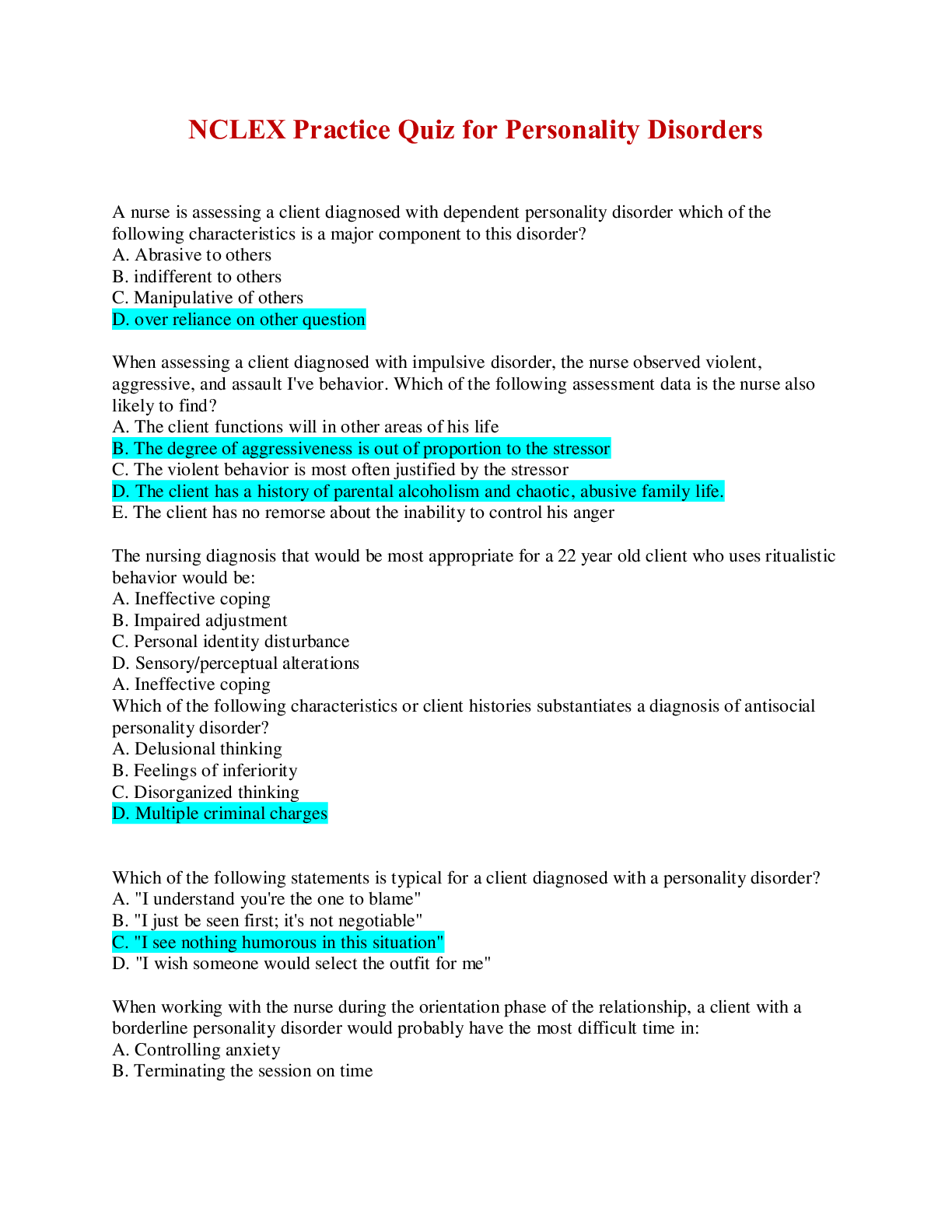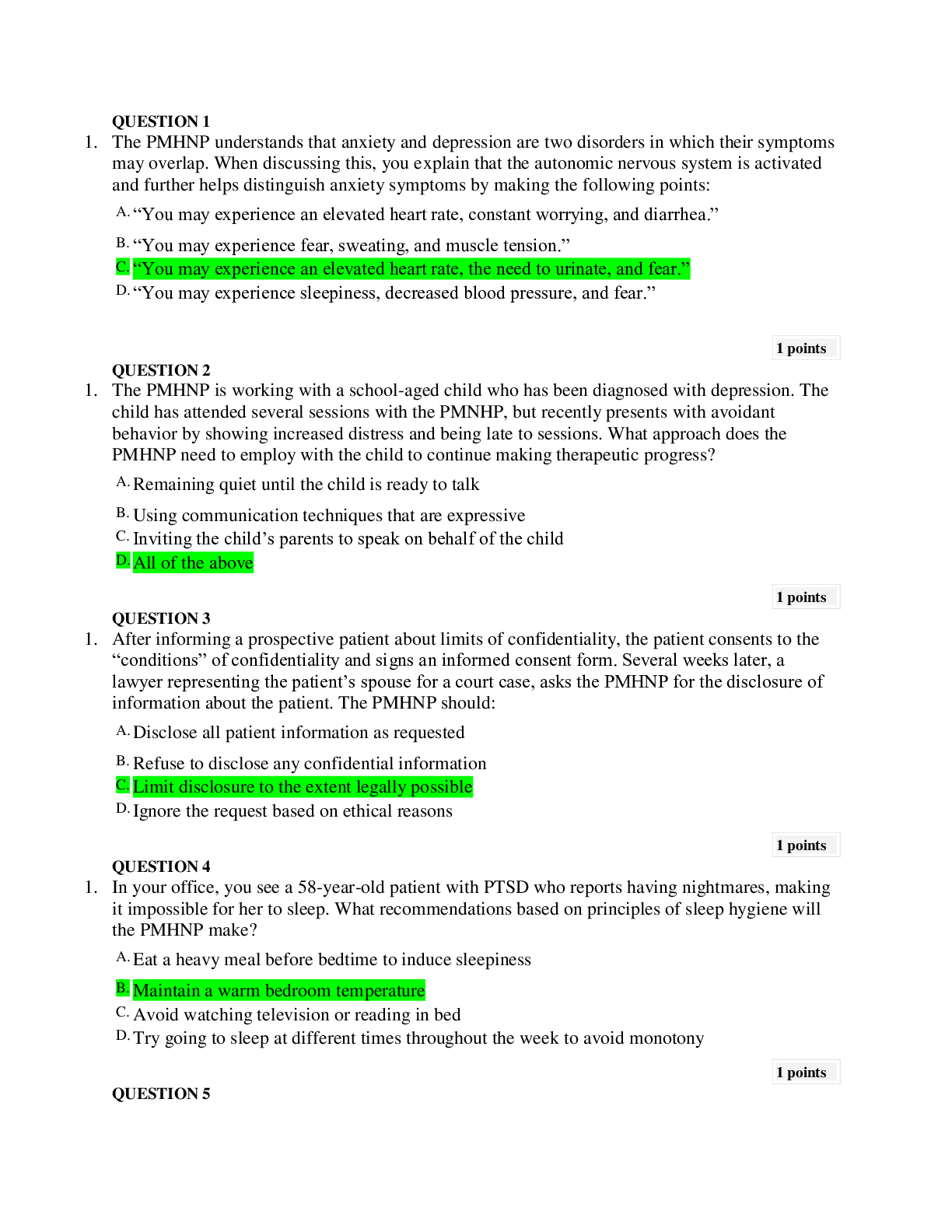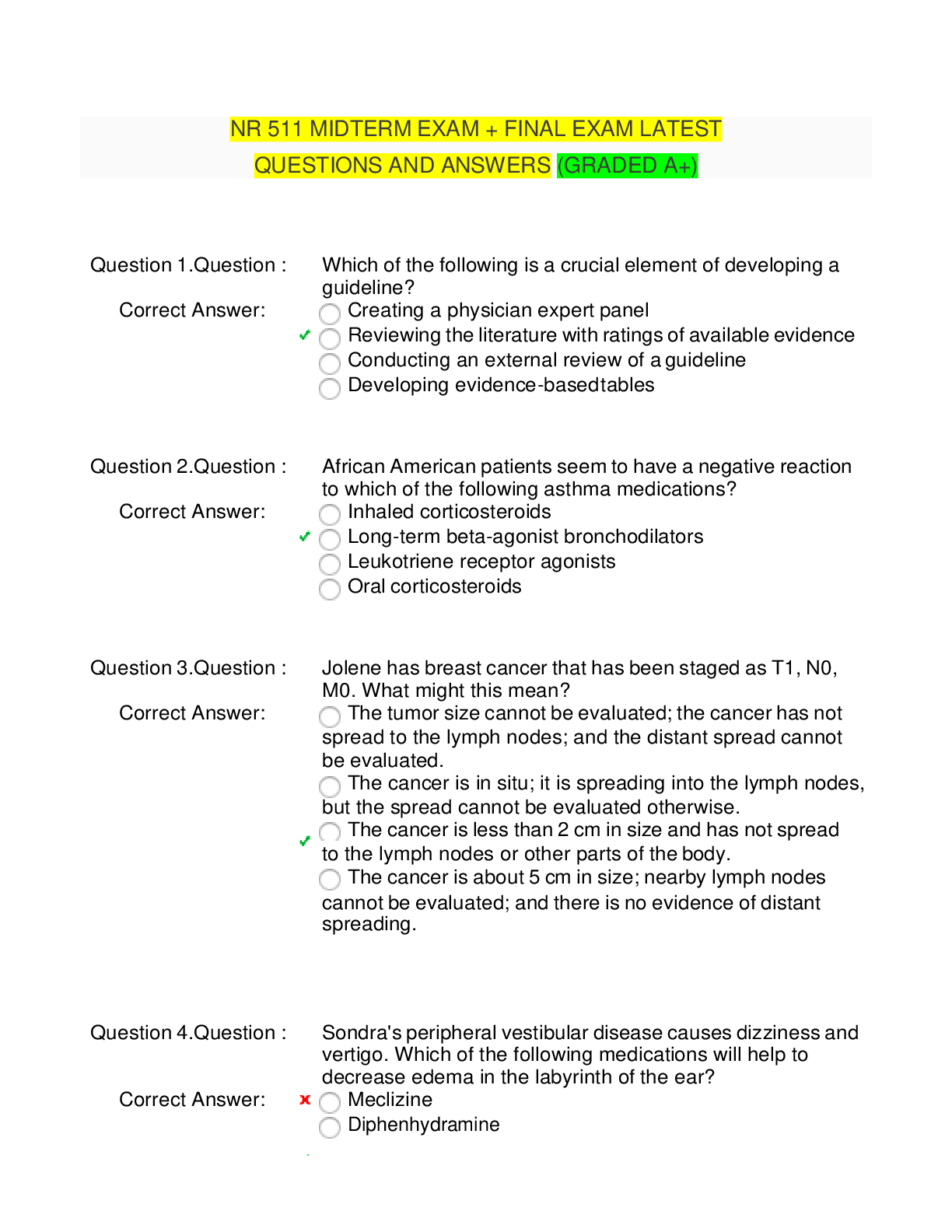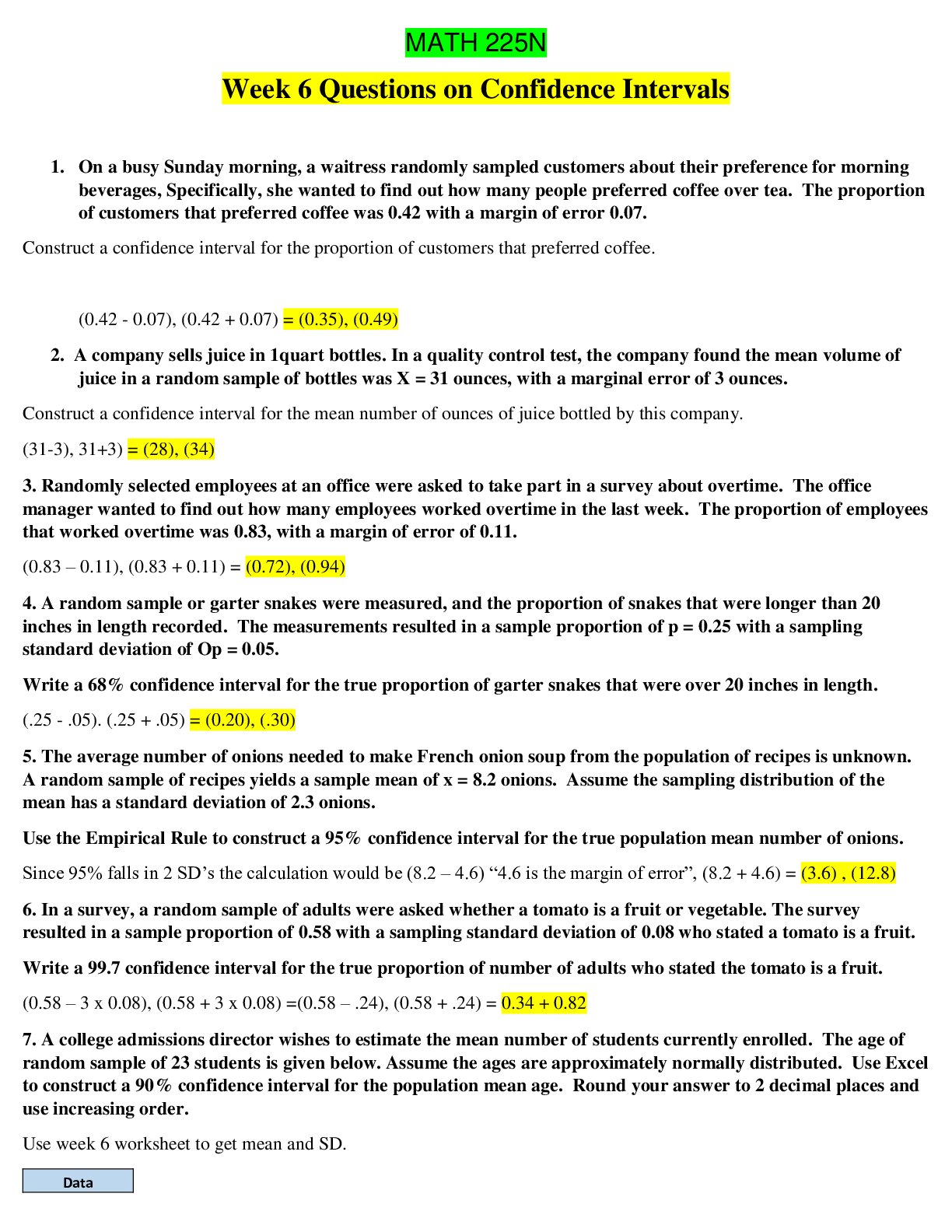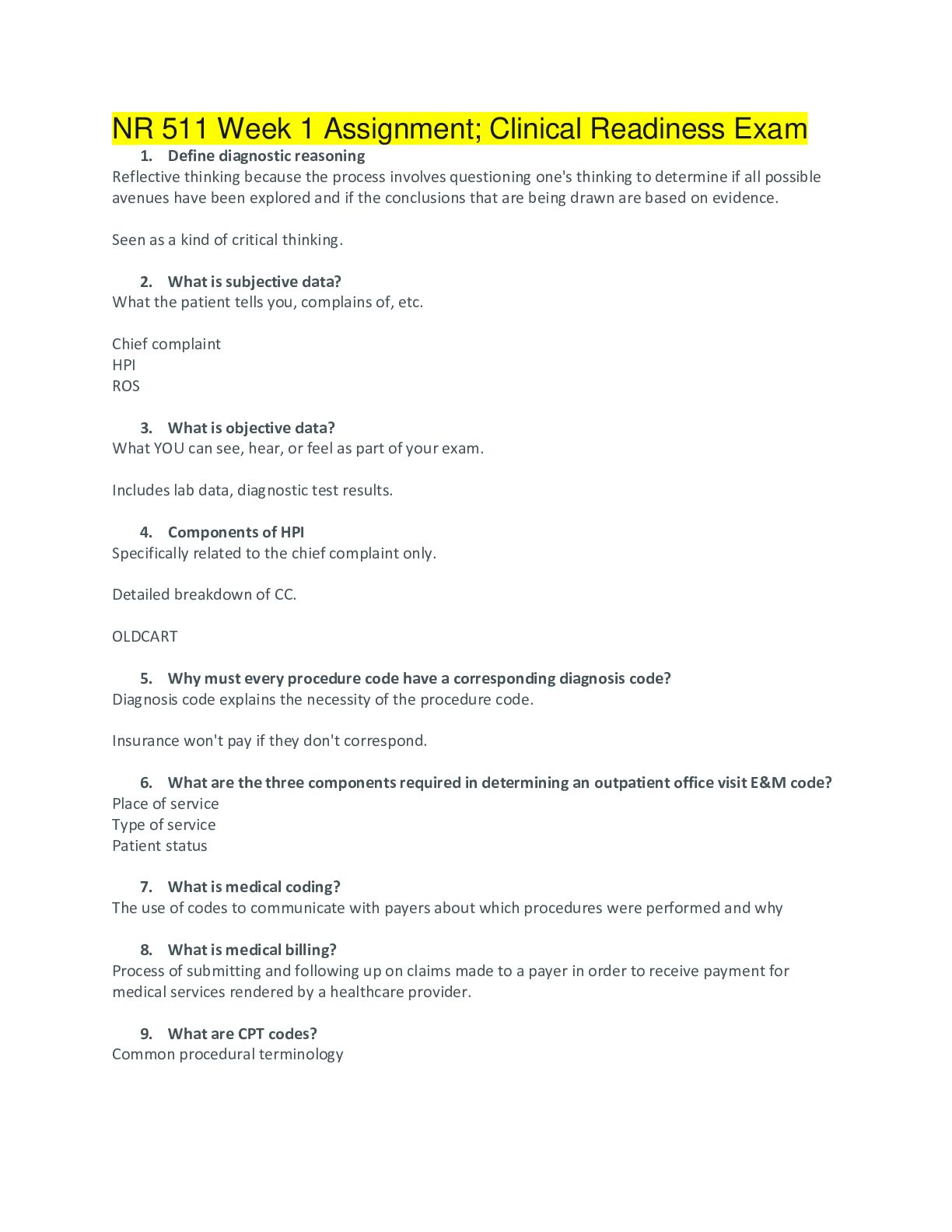Critical Care Practice Quiz - Questions and Answers
Document Content and Description Below
Critical Care Practice Quiz - Questions and Answers The nurse is caring for a client who is 4 days postoperative for abdominal surgery. The client reports acute onset of difficulty breathing. The nu... rse obtains the vital signs which include a heart rate of 120 beats/minute and respirations of 35 breaths/minute. Which diagnostic test should the nurse prepare the client to expect the healthcare provider to prescribe? A) D-dimer blood test. B) Coagulation time and platelet count. C) Echocardiogram. D) Mass spectrometry. The nurse is caring for a client who is diagnosed with diabetic ketoacidosis (DKA). The client reports abdominal pain and nausea, and presents with fruity-scented breath. The nurse performs a finger stick blood glucose with a reading too high to register. Which intervention is most important for the nurse to implement? A) Initiate a one liter bolus of 0.9% sodium chloride. B) Set up an IV pump to infuse IV insulin per protocol. C) Draw blood to evaluate a complete metabolic panel. D) Administer a prn IV dose of prescribed antiemetic. The nurse is caring for a client who is demonstrating signs of impending death. The family is experiencing emotional distress as the client's condition declines. Which information should the nurse provide the family to facilitate the process? A) Encourage the family to give the client permission to die. B) Revoke the "do not resuscitate" advanced directive. C) Send the family to an area to seek spiritual comfort. D) Give the client pain medication during the end of life hours. The nurse is caring for a client with severe sepsis related to a ruptured appendix.The clientis diaphoretic and reports lower extremity spasms. The nurse observes respirations that are uneven and labored. Arterial blood gas (ABG) results are pH 7.60, PaCO2 25 mmHg, HCO3 24 mEq/L, and PaO2 24 mmHg. Which assessment finding warrants immediate intervention by the nurse? A) Increased pulmonary secretions. B) Intercostal muscle retraction. C) Decreased breath sounds. D) Bronchovesicular breath sounds. A client is trying to talk with an endotracheal tube in place for mechanical ventilation. Which method is most readily available for the nurse to provide the client for communication? A) Communication board or paper pencil to write messages. B) Hand gestures that explain what the client wants to say. C) Communication by interrupting ventilator for short periods of time. D) Touch screen figures or text to voice communication computers. Which intervention should the nurse perform prior to the removal of an endotracheal tube from a client? A) Suction the endotracheal tube thoroughly. B) Pre-medicate the client with pain medication. C) Increase the FiO 2 for a minimum of 15 minutes. D) Provide positive pressure ventilation prior to extubation. Client returns to the intensive care unit (ICU) after having a permanent pacemaker inserted. Which finding should the nurse observe for during the immediate hours after insertion? A) Beck's triad. B) Burns around the site C) Hypothermia D) Cardiac arrhythmia. A male client who experienced a myocardial infarction (MI) asks the nurse what could have caused the MI, since he had been following a lifestyle of regular exercise and healthy food choices. Which response should the nurse provide to the client? A) A family history of heart disease is a risk factor for MI. B) Foods consumed when younger can cause plaque formation. C) Immediate medical treatment was a primary factor is survival. D) Myocardial tissue after a minor MI can heal with no long-term effects. A client diagnosed with gastric ulcers is admitted for a cauterization procedure. Which finding(s) should the nurse report to the healthcare provider? (Select all that apply.) A) Decreased level of consciousness. B) Hypoactive bowel sounds. C) Decreased urine output. D) Coffee-ground vomitus. E) Positive guaiac stools A client who arrived in the emergency department is experiencing status epilepticus. Which medication should the nurse administer immediately? A) Lorazepam IV. B) Phenytoin PO. C) Morphine IV. D) Levetiracetim PO. A client falls off a ladder approximately 15 feet high and is admitted to the ICU for observation due to a small intracranial bleed noted in the left occipital area of the brain as observed on the CT Scan done in the emergency department. The client has been stable for the past 12 hours. The client reports to the nurse a new onset of pain in the left shoulder. Which action should the nurse do next? A) Contact the healthcare provider. B) Perform an abdominal assessment. C) Observe the client's pupillary response. D) Examine the left shoulder's range of motion. A client with chronic kidney disease (CKD) is admitted for strict fluid restriction. Which assessment finding requires additional nursing action? A) Crackles in the lungs. B) Decreased serum creatinine level. C) Increased weakness. D) Increase in serum potassium A client's blood pressure drops suddenly from 160/90 mmHg to 60/40 mmHg minutes after the nurse administers a 0.3 mg sublingual dose of nitroglycerin when the client reports crushing chest pain. The client is experiencing severe nausea, dizziness, and left arm numbness. Which intervention should the nurse implement? A) Give a PRN antiemetic medication. B) Administer second dose of nitroglycerin. C) Infuse a rapid0.9% normal saline bolus. D) Apply external pace maker pads to chest. Two days after surgical repair of an aortic abdominal aneurysm (AAA), the cardiac monitor is displaying sinus bradycardia and blood pressure 82/40 mmHg. Nitroprusside is infusing at 10 mcg/kg/min and 0.9% sodium chloride at 100 mL/hr. Which intervention should the nurse implement first? A) Place the client's head flat and elevate the feet. B) Stop the nitroprusside infusion. C) Rapidly administer 1 liter intravenous fluids. D) Increase the 0.9% sodium chloride to 150 mL/hr. The emergency department nurse is triaging a client whose spouse reports a sudden onset of symptoms to include fever, tremors, and decreased level of orientation and [Show More]
Last updated: 3 months ago
Preview 1 out of 13 pages
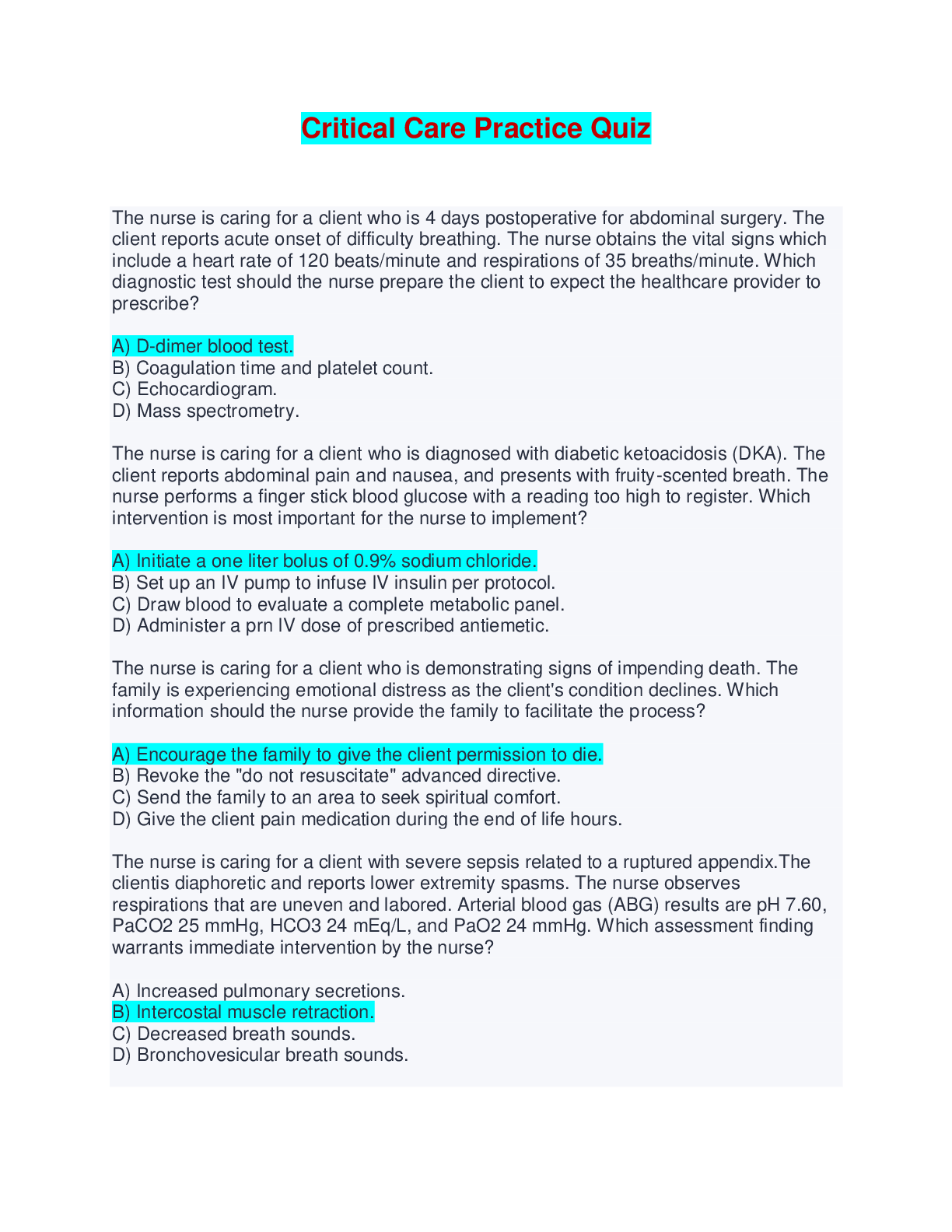
Buy this document to get the full access instantly
Instant Download Access after purchase
Add to cartInstant download
We Accept:

Also available in bundle (1)

CRITICAL CARE EXAMS BUNDLE
CRITICAL CARE EXAMS BUNDLE
By Nurse Henny 1 month ago
$35
5
Reviews( 0 )
$15.00
Document information
Connected school, study & course
About the document
Uploaded On
Apr 10, 2024
Number of pages
13
Written in
Additional information
This document has been written for:
Uploaded
Apr 10, 2024
Downloads
0
Views
11

